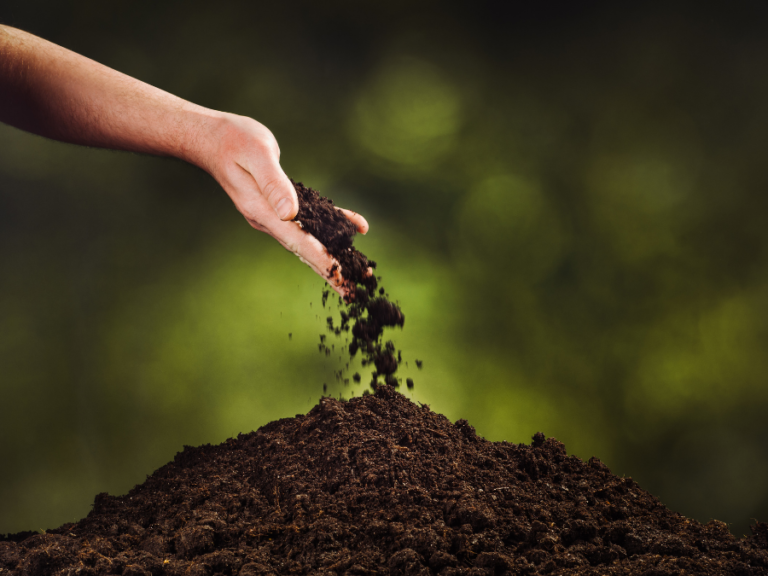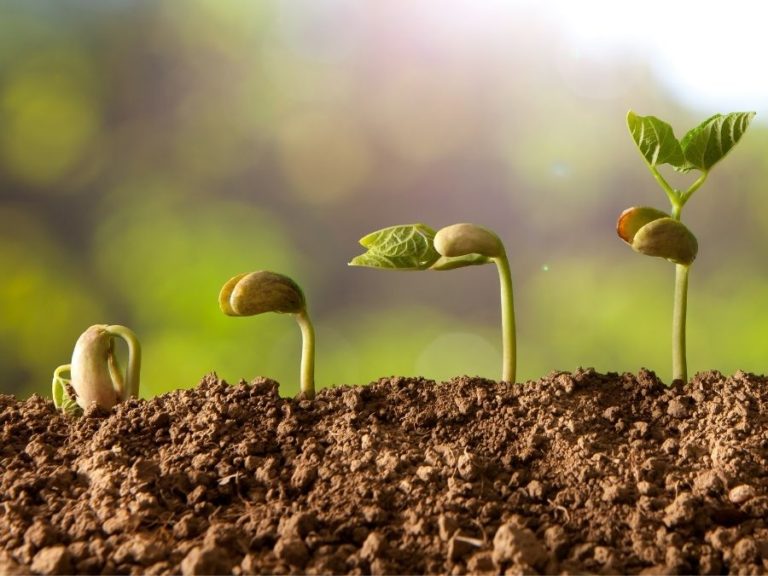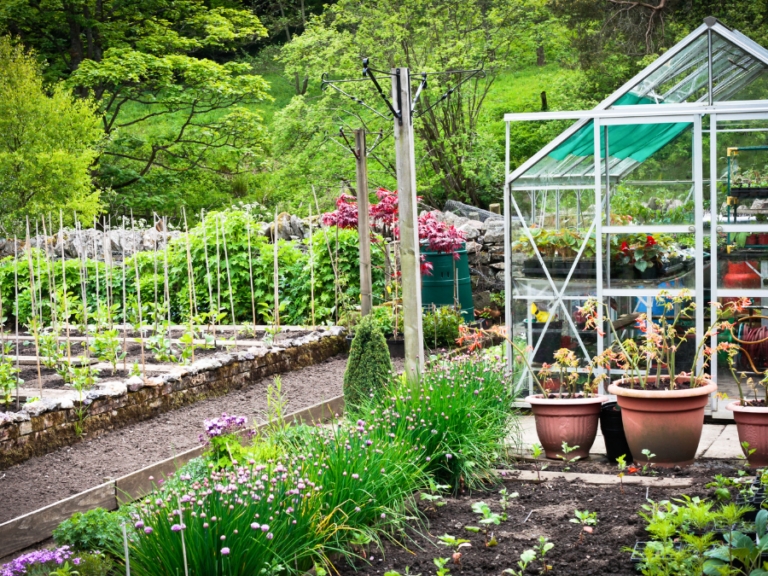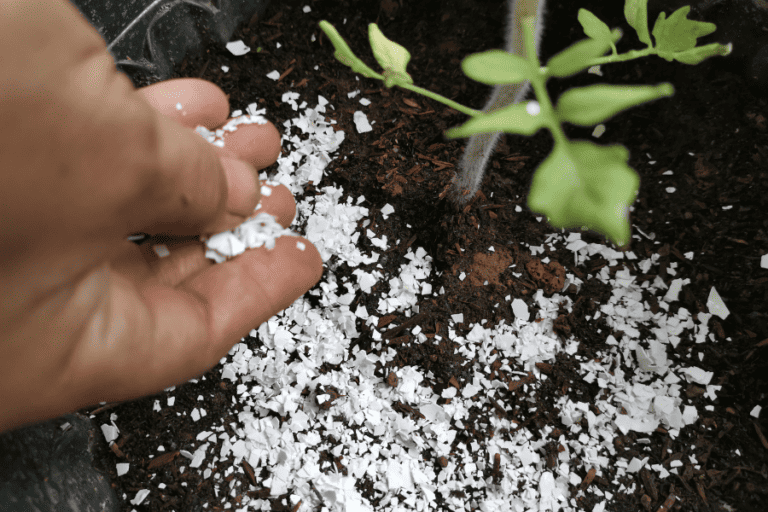How To Grow, Harvest And Store Garlic

Garlic, with its pungent aroma and robust flavour, is a kitchen staple that can easily be grown in your own backyard. Cultivating garlic not only provides a fresh and organic addition to your culinary endeavours but also offers numerous health benefits. In this article, we will walk you through the step-by-step process of growing garlic, from choosing the right varieties to harvesting to long-term storage options.
Disclaimer: This article includes affiliate links. If you click one of them, we may receive a small percentage of the sale at no extra cost to you. Thank you for your support!
Choosing the Right Garlic Varieties
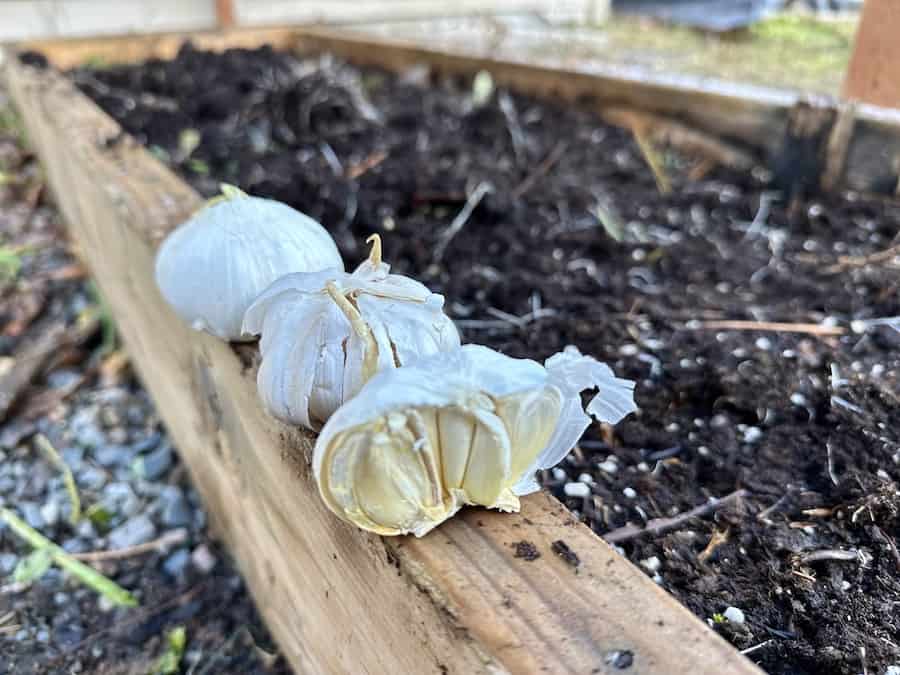
There are two main varieties of garlic, softneck and hardneck. The primary differences between these types of garlic lie in their characteristics, growth habits, and culinary uses. However, when selecting a garlic variety, you should consider which is better suited for your local climate and solid conditions.
Softneck Garlic
Softneck garlic is known for its subtle flavours, long-shelf life and adaptability to milder and warmer climates. Varieties, such as Silverskin and Artichoke, have soft, pliable stems at maturity, hence the name “softneck.” They tend to produce multiple layers of cloves around the central stem. The cloves are arranged in a concentric pattern, making them easier to braid. This characteristic makes softneck garlic a popular choice for braiding and long-term storage.
As for the milder flavour, they are often preferred for raw applications, such as dressings and dips, where the garlic flavour is more subtle and has a higher oil content than hardneck garlic.
Hardneck Garlic
Hardneck garlic is known for having a robust flavour, edible scapes and can grow in colder climates. It has a rigid, woody central stalk or “neck” that emerges from the bulb. The central stalk is the reason for the name “hardneck.” This type of garlic typically produces fewer but larger cloves compared to softneck varieties. Additionally, hardneck garlic plants develop a scape, a curly flowering shoot that emerges from the center of the plant. Scapes are edible and can be harvested before they fully straighten.
Hardneck garlic varieties are better suited for colder climates. They do not store as long as softneck varieties. However, their strong and robust flavours make them a popular choice and well-suited for cooking. The larger cloves are easier to handle and peel, making hardneck garlic a favourite for roasting, sautéing, and other culinary dishes where a bold garlic flavour is desired.
How To Plant Garlic
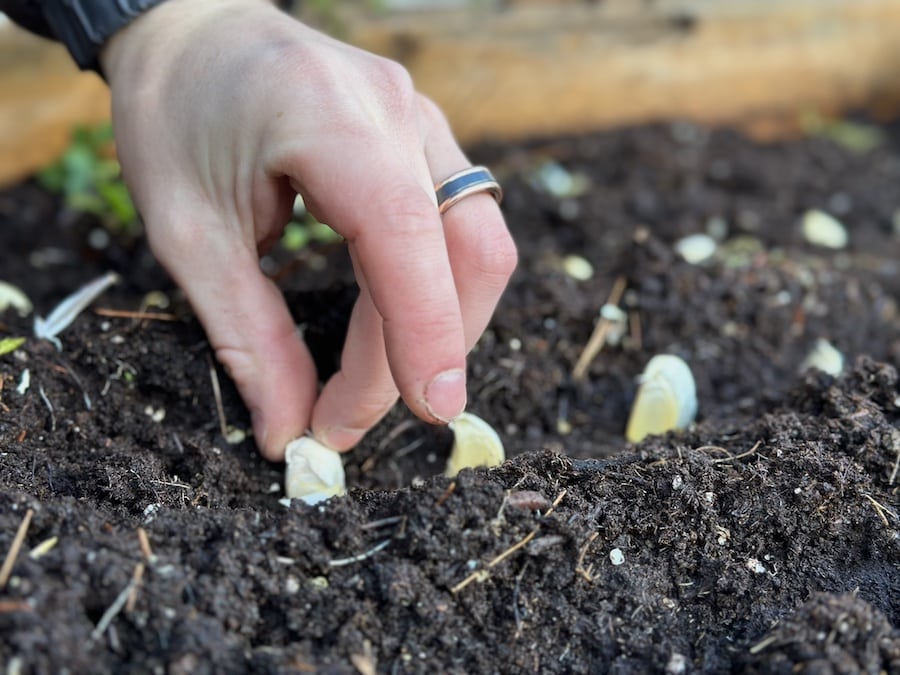
When To Plant Garlic
When it comes to planting garlic, the ideal time is in the fall, approximately 4-6 weeks before the first hard frost. This helps to ensure that garlic cloves undergo cold stratification and vernalization to develop a strong root system before winter dormancy. The cold exposure during winter and subsequent spring growth provides an extended growing season, allowing garlic to mature earlier and be harvested in late spring or early summer.
How To Prepare Soil
Garlic thrives in well-draining soil with good fertility. To prepare the soil, ensure the garden area is free of weeds, debris and large stones. Put organic matter such as compost or well-rotted manure to help improve soil structure and provide essential nutrients.
If you have a pH meter, conducting a soil test is a great way to make sure the soil is within the ideal pH range, which is typically between 6.0 and 7.0.
How To Space Garlic
Break apart garlic bulbs into individual cloves just before planting but do not peel off the skins. Plant each clove with the pointed end facing up, 1-3 inches deep and 6-8 inches apart. Ensure proper spacing to allow for bulb development.
How To Cover Garlic
After planting garlic, thoroughly water garlic and apply a layer of mulch, such as straw or chopped leaves, to conserve moisture, suppress weeds, and insulate the soil during winter.
In the spring as the weather begins to warm up, it’s a common practice to remove the mulch. Be sure to wait until the soil has thawed and the risk of hard frost has passed before removing it.
How To Harvest Garlic
The first key to successful garlic harvesting is knowing when the time is right. Garlic is ready to harvest when the lower leaves start to yellow and wither. This usually occurs in late spring or early summer, depending on your local climate. If you think your garlic is ready to harvest, follow these steps to properly harvest, cure and store your garlic.
Stop watering Your Garlic
About two weeks before your planned harvest date, cease watering your garlic plants. This allows the outer layers of the bulbs to dry and facilitates easier harvesting and curing.
Carefully Dig Out The Bulbs
Use a garden fork or shovel to gently loosen the soil around the garlic bulbs. Be cautious not to damage the bulbs during the digging process. Carefully lift the bulbs from the soil.
Cure Garlic For 2-4 weeks
Lay the bulbs out in a single layer in a dry, well-ventilated area, away from direct sunlight. Allow the garlic to cure for 2-4 weeks. Curing enhances the flavour and ensures a longer storage life.
Trim roots and tops before storing
Once the garlic bulbs are thoroughly cured, trim the roots and remove excess soil. Leave the outer wrappers intact, as they provide protection during storage. Trim the tops of the bulbs, leaving about an inch above the cloves.

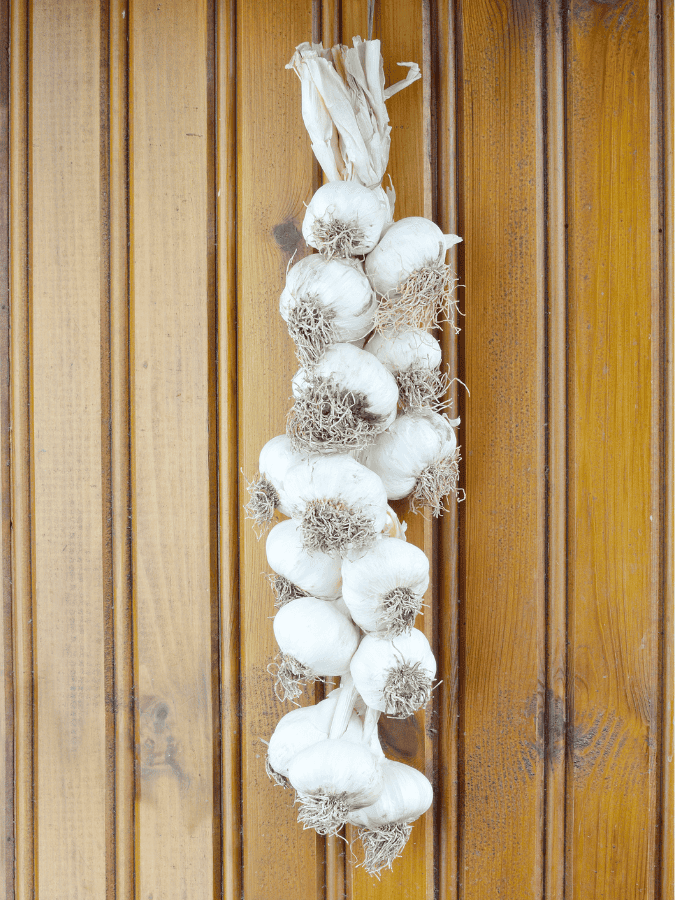
How To Store Garlic
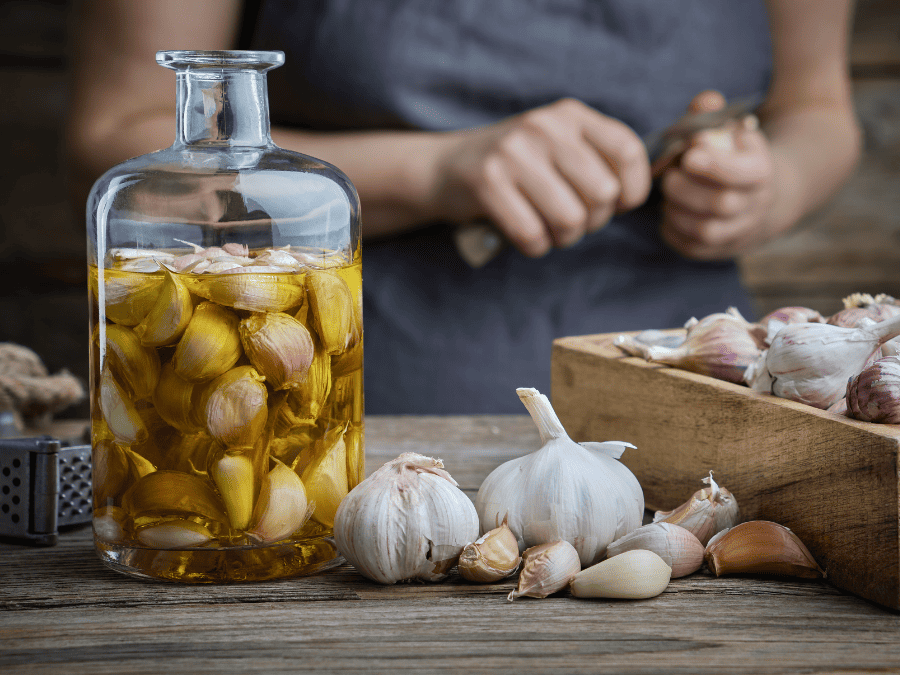
Once your garlic is cured and trimmed, you can choose your method of storage. Here are a few common ways to preserve and store your homegrown garlic.
Braiding softneck garlic
Softneck garlic is perfect for braiding and is often the method of choice as it not only does this method save space, but also adds a rustic touch to your kitchen. After curing, group several bulbs together and braid the long, flexible stems. Hang the garlic braids in a cool, well-ventilated area.
Mesh Bags For Hardneck Garlic
Hardneck garlic can stored in mesh bags. After curing, place the bulbs in the bag, ensuring good air circulation. Hang the bag in a cool, dry spot. This method is convenient and allows easy access to individual bulbs without disturbing the rest.
Dehydrate Garlic
Dehydrate garlic cloves by slicing them thinly or using a food dehydrator. Once dried, grind the garlic into powder. Store the powder in an airtight container in a cool, dark place. Dehydrated garlic is a versatile option for seasoning dishes and has a longer shelf life.
Freeze Garlic
Freezing garlic is a convenient and easy way to preserve garlic. The frozen pieces can be easily added to dishes during cooking. Simply, peel and finely chop or mince garlic cloves, then spread the pieces on a baking sheet and freeze. Once frozen, transfer the garlic bits to a freezer bag.
Make Garlic Oil
Garlic oils are great to have in the kitchen. You can make garlic-infused oil by steeping peeled garlic cloves in olive oil. Garlic-infused oil should be refrigerated and used within four days or frozen for long-term storage.
Pickle Garlic
Create pickled garlic by placing peeled garlic cloves in a jar with a mixture of vinegar, water, and salt. Add herbs or spices for extra flavour then can it using a pressure canner or water bath. Pickled garlic adds a tangy twist to salads, antipasto platters, or as a flavorful garnish.
Related Questions
How do I store harvested garlic? After curing, trim the roots and remove excess soil. Store garlic in a cool, dry place with good air circulation. Braiding softneck garlic is a traditional and space-efficient storage method.
Can I plant store-bought garlic? While store-bought garlic may sprout, it’s best to purchase seed garlic from reputable sources. This ensures disease-free and well-adapted varieties.
What pests and diseases are common for garlic? Aphids, nematodes, and white rot are common garlic pests and diseases. Practice crop rotation, use disease-free seed garlic, and consider organic pest control methods such as ladybugs.

